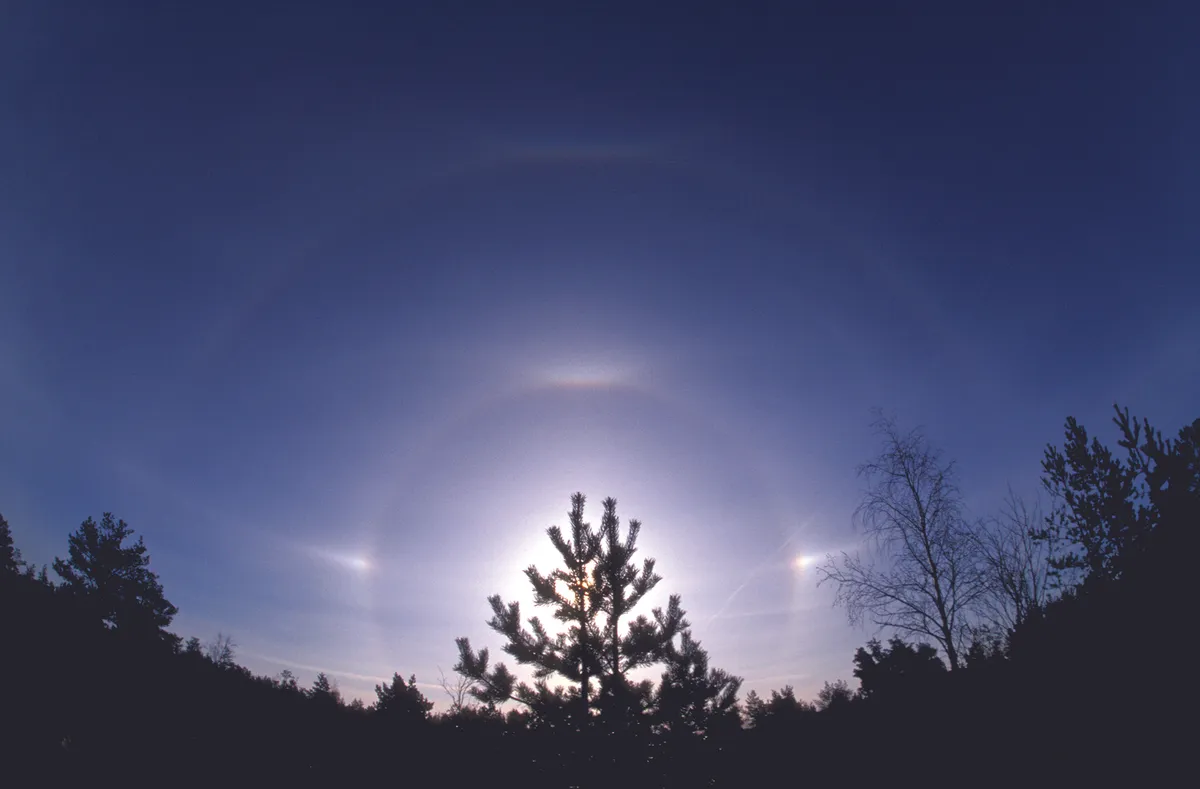Have you ever looked towards the Sun when it was low in the winter sky, and seen it flanked by two pillars of light – either pure white, or looking like the first shoots of a rainbow – about 22° to either side?
Then you’ve seen a Sun dog – or rather a couple of Sun dogs, because they almost always come in pairs.
Also known as parhelia, Sun dogs are a phenomenon that’s been well documented through human history – Aristotle called them “mock suns”.
Sun dogs can be seen anywhere, at any time of year and at any time of day – but your best bet for seeing one is in the northern hemisphere when the Sun is low in the sky.
And they form in a very similar way to rainbows or even moonbows. Another phenomena visible when the Sun is low in the sky – if you're lucky – is the elusive red rainbow.

Sun dogs vs rainbows
The difference between Sun dogs and rainbows is that while rainbows form when sunlight is refracted as it passes through droplets of rainwater, Sun dogs form when sunlight is refracted as it passes through hexagonal crystals of atmospheric ice.
Floating gently downwards, these crystals act as prisms and bend the light passing through them horizontally, causing Sun dogs to appear to the left and right of the Sun.
There are, in fact, several other phenomena that form in similar circumstances.
Depending on how high up the Sun is in the sky – and depending whether the ice crystals are gently fluttering downwards in horizontal orientation, like a little troop of parachutists, or divebombing the Earth vertically – the refraction of light through ice can cause you to see Sun dogs, a 22° halo (where a full ring forms around the Sun), a parhelic circle, circumhorizontal arc, Sun pillar, Parry arc or upper tangent arc.
You can find more examples in our guide to daytime astronomy

How to tell a Sun dog from a rainbow
There are a couple of easy ways to tell if you’re looking at Sun dogs or simply an incomplete rainbow.
Firstly, you see Sun dogs when you look towards the Sun, whereas rainbows appear when you look away from it.
Of course, looking at directly at the Sun with the naked eye is never advised and caution should always be taken.
Secondly, in a rainbow, red appears at the top (ie, on the outside), with blue light on the inside/underside.
Sun dogs, however, appear in reverse spectral order, with red light closest to the Sun and blue light on the side farthest to it.
Traditional wisdom also has it that rainbows signify the weather improving – sunlight after rain – whereas Sun dogs are a portent of colder, wetter weather to come.

Why are they called Sun dogs?
No-one really knows for sure, but the general consensus is it has something to do with the shafts of light following the Sun around like dogs following their owner.
Even assuming that’s true, though, it’s unclear whether the name was given to them in English, or whether it was imported from Old Norse, or even ancient Greek.

